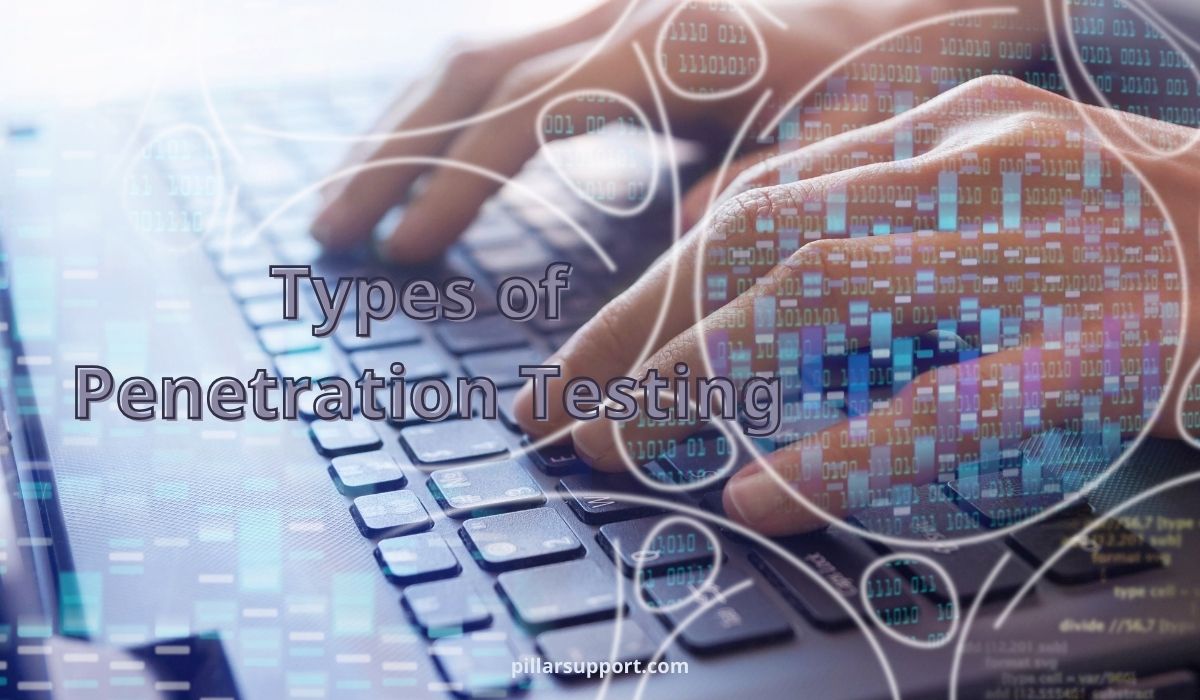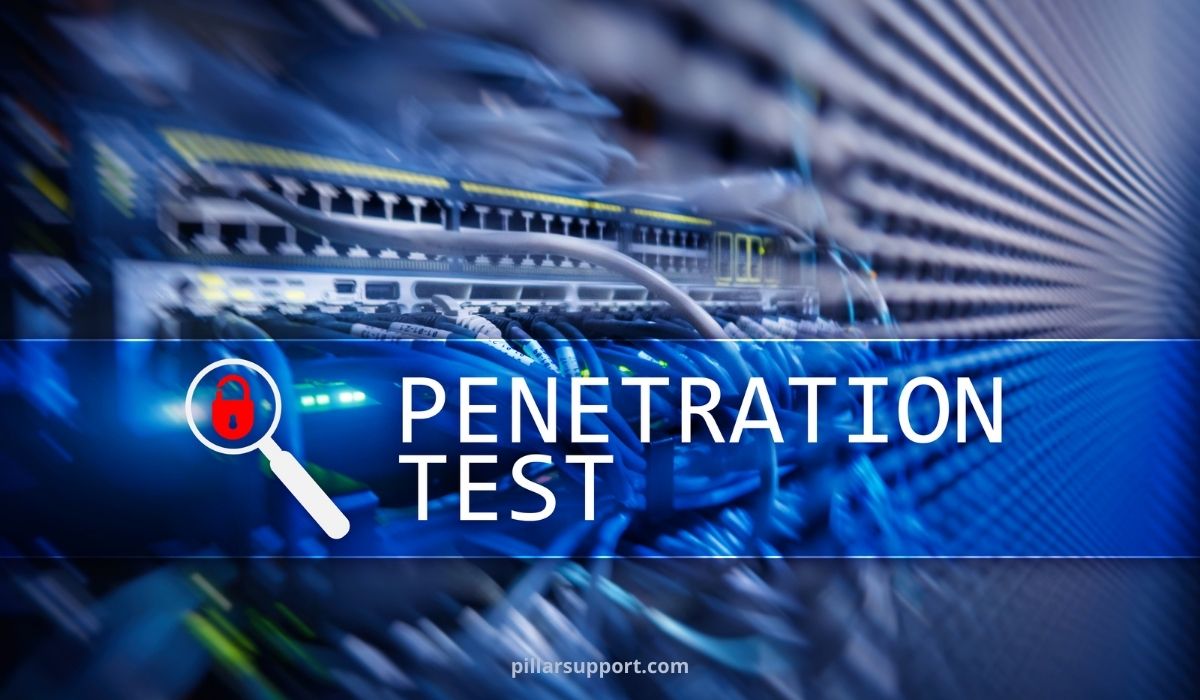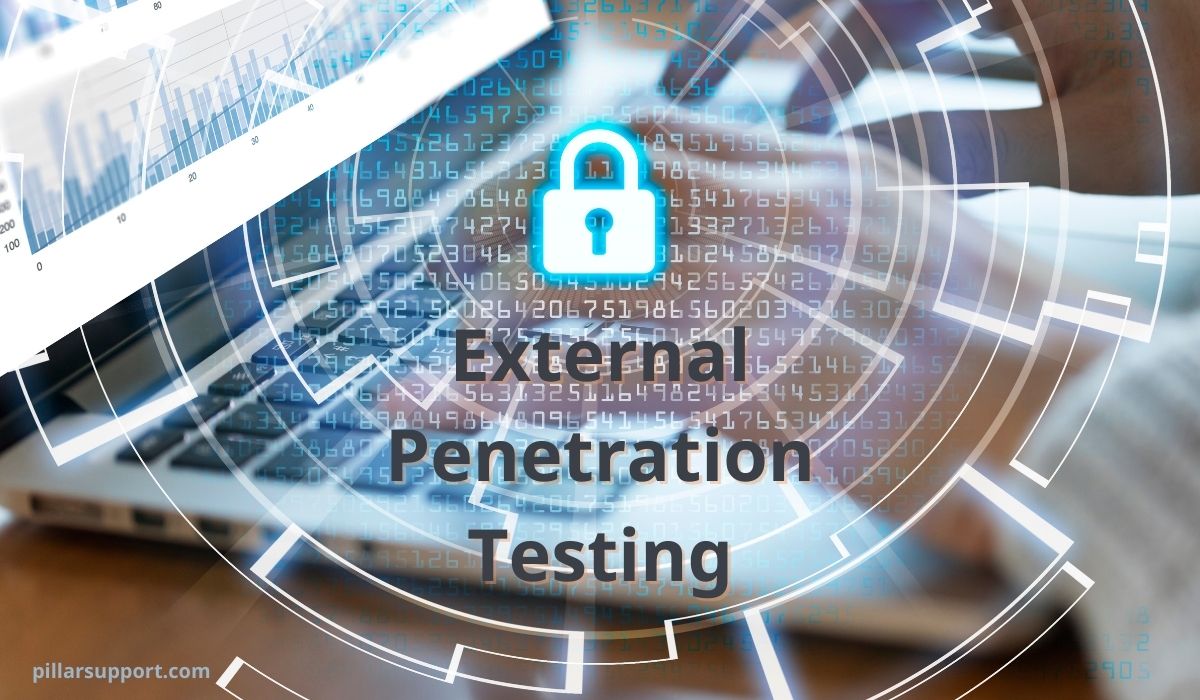Demystifying Cloud Penetration Testing
In today’s digital landscape, where businesses increasingly rely on cloud infrastructure to store, process, and manage data, ensuring the security of cloud environments is paramount. Cloud penetration testing plays a crucial role in this regard, providing organizations with a proactive approach to identifying and addressing vulnerabilities in their cloud-based systems.
As businesses transition their operations to the cloud, they face a myriad of security challenges, including data breaches, unauthorized access, and compliance risks. Cloud penetration testing, also known as cloud security testing, involves simulating real-world cyber attacks to uncover weaknesses in cloud infrastructure, applications, and configurations. By conducting thorough assessments of cloud environments, organizations can gain valuable insights into potential security gaps and take proactive measures to mitigate risks.
In this introduction to cloud penetration testing, we’ll explore the significance of this practice and its role in safeguarding organizations’ cloud-based assets. From understanding common cloud security threats to implementing effective testing strategies, businesses can leverage cloud penetration testing to enhance their overall cybersecurity posture and ensure the integrity and confidentiality of their data in the cloud.
Table of Contents
Understanding Cloud Security Challenges
While cloud computing offers undeniable benefits like scalability and agility, it also presents unique security challenges that demand careful consideration. Unlike traditional on-premises environments, cloud security requires a shared responsibility model, where both the cloud provider and the user play crucial roles in safeguarding data and applications. Let’s explore some key challenges that necessitate robust security strategies in the cloud:
1. Shared Responsibility Model
- Complexity: Balancing the responsibilities between cloud providers and users can be complex, requiring clear understanding of which security aspects each party is accountable for.
- Misconfiguration: Improper configuration of cloud resources, storage buckets, or access controls can expose vulnerabilities and sensitive data.
2. Data Security and Privacy
- Data residency and sovereignty: Understanding where your data is stored and how it complies with relevant regulations is crucial, especially for geographically sensitive data.
- Data encryption: Ensuring data is encrypted at rest and in transit is essential to protect it from unauthorized access, even if intercepted.
3. Access Control and Identity Management
- Granular access controls: Implementing appropriate access controls that restrict access to specific resources based on the principle of least privilege is critical.
- Multi-factor authentication: Utilizing multi-factor authentication adds an extra layer of security to access attempts, making it more difficult for unauthorized users to gain entry.
4. Insecure APIs and Applications
- API vulnerabilities: APIs act as gateways to cloud resources, and any vulnerabilities within them can be exploited to gain unauthorized access to sensitive data or functionalities.
- Misconfigured applications: Improperly secured cloud applications can introduce vulnerabilities that attackers can leverage to compromise data or disrupt operations.
5. Insider Threats
- Accidental or malicious insiders: Even authorized users can pose a threat through accidental errors or malicious intent, highlighting the importance of robust access controls and security awareness training.
6. Evolving Threat Landscape
- Cloud-specific threats: New attack vectors and vulnerabilities emerge constantly, requiring continuous monitoring, threat intelligence, and adaptation of security strategies.
These challenges are not insurmountable. By adopting a comprehensive security approach that addresses these concerns, organizations can leverage the immense potential of cloud computing while mitigating associated risks. Implementing best practices, utilizing appropriate security tools, and staying vigilant against evolving threats are essential for building a secure and resilient cloud environment.
Importance of Cloud Penetration Testing
Cloud penetration testing plays a critical role in safeguarding the security and integrity of cloud-based systems, providing organizations with invaluable insights into potential vulnerabilities and threats within their cloud environments. Here’s why cloud penetration testing is essential:
- Identifying Vulnerabilities: Cloud penetration testing helps organizations proactively identify vulnerabilities and security weaknesses in their cloud infrastructure, applications, and configurations. By simulating real-world cyber attacks, penetration testers can uncover exploitable flaws that could compromise the confidentiality, integrity, and availability of data stored in the cloud.
- Mitigating Security Risks: By detecting vulnerabilities early, organizations can take prompt action to remediate security risks before they are exploited by malicious actors. Cloud penetration testing enables businesses to prioritize and address critical security issues, reducing the likelihood of data breaches, unauthorized access, and other cyber threats.
- Ensuring Compliance: Many regulatory frameworks and industry standards require organizations to conduct regular security assessments, including penetration testing, to demonstrate compliance with data protection and privacy regulations. Cloud penetration testing helps businesses meet compliance requirements by identifying and addressing security gaps that could lead to regulatory violations.
- Enhancing Security Posture: Cloud penetration testing provides organizations with valuable insights into their overall security posture, helping them identify areas for improvement and implement effective security controls. By continuously assessing and refining their security measures, businesses can enhance their resilience to evolving cyber threats and better protect their cloud-based assets.
- Building Customer Trust: Demonstrating a commitment to security and proactive risk management through cloud penetration testing can enhance customer trust and confidence. By assuring customers and stakeholders that their data is protected against cyber threats, organizations can strengthen their reputation and differentiate themselves in the marketplace.
Overall, cloud penetration testing is essential for organizations seeking to maintain a robust and secure cloud infrastructure. By proactively identifying and addressing security vulnerabilities, businesses can mitigate risks, ensure compliance, and bolster their overall cybersecurity posture in an increasingly digital and interconnected world.
Types of Cloud Penetration Testing
Ensuring the security of your cloud environment requires a multi-faceted approach. Cloud penetration testing, acting as your digital security compass, offers various specialized techniques to identify and address vulnerabilities. Let’s delve into the diverse types of cloud penetration testing and understand their unique strengths:
1. External Penetration Testing (Black Box)
- Imagine: Simulating an external attacker’s perspective, with limited knowledge of your internal systems.
- Focus: Evaluates the security of your cloud environment from the outside-in, mimicking real-world attacks.
- Suitable for: Identifying vulnerabilities exploitable by external actors, assessing overall external security posture.
2. Internal Penetration Testing (White Box)
- Imagine: Possessing full knowledge of your cloud environment, acting like a trusted insider.
- Focus: Evaluates the security of your cloud environment from the inside-out, identifying vulnerabilities exploitable by authorized users or misconfigurations.
- Suitable for: Assessing internal controls, identifying vulnerabilities exploitable by insiders, ensuring proper configuration of cloud resources.
3. Hybrid Penetration Testing (Grey Box)
- Imagine: Combining elements of both external and internal testing, with a defined level of knowledge shared with the tester.
- Focus: Provides a balanced approach, offering insights into both external and internal vulnerabilities.
- Suitable for: Balancing efficiency with comprehensiveness, addressing specific areas of concern while considering external and internal perspectives.
Choosing the Right Approach
The optimal testing type depends on your specific needs and risk profile:
- External testing: Ideal for assessing your public-facing cloud infrastructure and applications against real-world threats.
- Internal testing: Crucial for evaluating internal security controls and identifying vulnerabilities exploitable by authorized users or misconfigurations.
- Hybrid testing: Offers a comprehensive assessment, balancing external and internal perspectives while focusing on specific areas of concern.
Complementary Power
These testing types are not mutually exclusive; they can be combined for a more holistic assessment:
- Start with external testing: Gain insights into external vulnerabilities and overall security posture.
- Follow with internal testing: Identify weaknesses exploitable by insiders and ensure proper configuration.
- Regularly conduct hybrid testing: Maintain a continuous security posture by addressing evolving threats and configurations.
Understanding the different types of cloud penetration testing and their applications empowers you to choose the most suitable approach for your specific needs. By leveraging these diverse testing methodologies, you can proactively identify and address vulnerabilities, building a robust and secure cloud environment.
Cloud Penetration Testing Process
Cloud penetration testing is a systematic process designed to evaluate the security of cloud environments and identify vulnerabilities that could be exploited by malicious actors. Here’s a step-by-step breakdown of the cloud penetration testing process:
1. Planning and Preparation
- Objective Definition: Define the goals and objectives of the penetration test, including the scope, target systems, and specific testing methodologies to be employed.
- Legal and Compliance Considerations: Ensure compliance with relevant laws, regulations, and organizational policies governing penetration testing activities.
- Authorization and Permissions: Obtain necessary authorization and permissions from stakeholders and cloud service providers to conduct the penetration test.
2. Reconnaissance
- Information Gathering: Gather information about the cloud environment, including network architecture, services, applications, and potential attack vectors.
- Asset Discovery: Identify and enumerate cloud assets, such as servers, databases, storage repositories, and virtual networks, to understand the scope of the test.
- Enumeration: Enumerate cloud resources, services, and configurations to identify potential vulnerabilities and misconfigurations.
3. Vulnerability Assessment
- Scanning and Enumeration: Use automated scanning tools and manual techniques to identify known vulnerabilities, weak configurations, and exposed services within the cloud environment.
- Service Identification: Identify and enumerate cloud services and applications that may be susceptible to exploitation.
- Risk Prioritization: Prioritize identified vulnerabilities based on severity, likelihood of exploitation, and potential impact on the organization’s assets and operations.
4. Exploitation
- Exploit Validation: Attempt to exploit identified vulnerabilities to gain unauthorized access or escalate privileges within the cloud environment.
- Proof of Concept: Demonstrate the impact of successful exploitation by simulating real-world attack scenarios and compromising critical assets or data.
- Post-Exploitation Activities: Conduct further reconnaissance and lateral movement to assess the extent of potential damage and explore additional attack vectors.
5. Reporting and Documentation
- Findings Compilation: Compile detailed findings, including identified vulnerabilities, exploited weaknesses, and recommendations for remediation.
- Risk Assessment: Assess the overall risk posture of the cloud environment based on the severity and potential impact of identified vulnerabilities.
- Executive Summary: Prepare an executive summary highlighting key findings, risk assessment, and actionable recommendations for management and stakeholders.
6. Remediation Guidance
- Mitigation Recommendations: Provide actionable recommendations and guidance for addressing identified vulnerabilities and strengthening the security posture of the cloud environment.
- Patch Management: Advice on patching vulnerable systems, implementing security best practices, and enhancing security controls to mitigate risks effectively.
- Continuous Improvement: Recommend ongoing monitoring, testing, and security enhancement measures to maintain a proactive security posture and mitigate future threats.
By following a structured and methodical approach to cloud penetration testing, organizations can effectively identify and address security vulnerabilities, mitigate risks, and enhance the overall security posture of their cloud environments.
Best Practices for Cloud Penetration Testing
Cloud penetration testing plays a crucial role in identifying and mitigating security risks in cloud environments. To ensure the effectiveness and success of penetration testing initiatives, it’s essential to follow best practices that optimize testing procedures and maximize results. Here are some recommended best practices for conducting cloud penetration testing:
1. Define Clear Objectives
Clearly define the goals and objectives of the penetration test, including the scope, target assets, and specific testing methodologies to be employed. Align objectives with business goals and security requirements to ensure relevance and effectiveness.
2. Thoroughly Plan and Prepare
Conduct thorough planning and preparation before initiating the penetration test. Define the scope, obtain necessary permissions, and ensure compliance with legal and regulatory requirements. Prepare a detailed testing plan outlining the steps, tools, and resources required for the test.
3. Leverage Automated Tools and Manual Techniques
Utilize a combination of automated tools and manual techniques to identify vulnerabilities and assess the security posture of cloud environments comprehensively. Automated scanning tools can help detect known vulnerabilities, while manual testing allows for deeper analysis and identification of complex issues.
4. Simulate Real-World Attack Scenarios
Simulate real-world attack scenarios during penetration testing to assess the effectiveness of existing security controls and identify potential weaknesses. Mimic the tactics, techniques, and procedures (TTPs) used by attackers to gain unauthorized access and exploit vulnerabilities.
5. Stay Abreast of Emerging Threats
Stay informed about emerging cyber threats, vulnerabilities, and attack techniques relevant to cloud environments. Regularly update testing methodologies and incorporate new tools and techniques to address evolving security challenges effectively.
6. Document Findings and Recommendations
Thoroughly document findings, including identified vulnerabilities, exploitation techniques, and recommendations for remediation. Provide actionable guidance and prioritized remediation steps to assist stakeholders in addressing security issues effectively.
7. Ensure Stakeholder Collaboration
Foster collaboration and communication between penetration testing teams, IT security personnel, cloud service providers, and other relevant stakeholders. Share findings, discuss remediation strategies, and coordinate efforts to address security vulnerabilities and mitigate risks.
8. Verify Remediation Efforts
Verify the effectiveness of remediation efforts by retesting previously identified vulnerabilities after they have been addressed. Conduct validation testing to ensure that security controls have been properly implemented and vulnerabilities have been successfully mitigated.
9. Continuous Improvement and Learning
Emphasize a culture of continuous improvement and learning within the organization’s security practices. Conduct post-mortem reviews of penetration testing exercises to identify lessons learned, areas for improvement, and opportunities to enhance security posture.
10. Engage Qualified Penetration Testing Providers
Consider engaging qualified penetration testing providers with expertise in cloud security and extensive experience in conducting comprehensive penetration tests. Partnering with reputable security firms can help ensure the quality and effectiveness of penetration testing initiatives.
By following these best practices, organizations can enhance the effectiveness of their cloud penetration testing efforts, identify and mitigate security risks proactively, and strengthen the overall security posture of their cloud environments.
Why Choose Us?
1. Our Expertise
With our extensive experience in IT support and cybersecurity, we understand the critical importance of safeguarding your cloud infrastructure against unauthorized access and potential threats. Our team comprises skilled professionals who specialize in conducting comprehensive penetration tests tailored to meet your specific security requirements.
2. Comprehensive Testing Solutions
We offer a range of penetration testing services designed to assess the security posture of your cloud environments comprehensively. From external and internal testing to specialized assessments, we provide holistic solutions aimed at identifying vulnerabilities and mitigating risks effectively.
3. Holistic Approach to Security
At our core, we prioritize a holistic approach to cybersecurity, recognizing that protecting your organization’s assets requires more than just identifying vulnerabilities. With our penetration testing services, we not only uncover security weaknesses but also provide actionable recommendations and support to remediate identified issues and enhance your overall security posture.
4. Partnership with Vonahi Security
As part of our commitment to delivering high-quality penetration testing services, we have partnered with Vonahi Security, a trusted leader in cybersecurity solutions. Through this partnership, we leverage their expertise and industry-leading tools to ensure the thoroughness and accuracy of our testing methodologies.
5. Tailored Solutions for Your Business
We understand that every organization has unique security needs and challenges. That’s why we take a tailored approach to our penetration testing services, customizing our methodologies and strategies to align with your business objectives, industry regulations, and compliance requirements.
6. Proven Track Record
Over the years, we have established a proven track record of helping businesses enhance their cybersecurity posture through effective penetration testing. Our satisfied clients testify to the value and impact of our services in mitigating risks, protecting sensitive data, and maintaining regulatory compliance.
Choose us as your trusted partner for cloud penetration testing, and rest assured that your organization’s security is in capable hands. Contact us today to discuss how we can help strengthen your defenses and safeguard your critical assets in the cloud.
Don’t Gamble with Your Cloud Security: Prioritize Penetration Testing Today!
Take the proactive step to enhance your cloud security posture and minimize the risk of unauthorized access and data breaches. Contact us today at 212-255-3970 and ask for Michael or Richard to discuss a PenTest solution tailored to your company’s specific needs.
Don’t wait until it’s too late – fortify your cloud environment with Pillar Support and Vonahi Security. Your data’s protection is our priority.
Frequently Asked Questions
What is a Cloud Penetration Test (Pen Test)?
A cloud pen test is a simulated cyberattack conducted on your cloud environment to identify vulnerabilities that malicious actors could exploit. It involves simulating real-world attack methods to assess the security posture of your cloud infrastructure, applications, and data.
What is the Cloud Security Testing Approach?
Cloud security testing involves a comprehensive approach to assess the security posture of your cloud environment. This includes:
Vulnerability scanning: Identifying potential weaknesses in your cloud infrastructure and applications using automated tools.
Penetration testing: Simulating real-world attacks to exploit vulnerabilities and assess their severity and impact.
Security posture assessments: Evaluating your overall security controls, policies, and procedures to identify areas for improvement.
How Does Cloud Penetration Testing Differ from Traditional Testing Methods?
While both methods aim to identify vulnerabilities, cloud pen testing specifically focuses on cloud environments, considering factors like:
Shared responsibility model: Security responsibilities are shared between cloud providers and users, requiring a different approach compared to on-premises environments.
Cloud-specific configurations and services: Testing needs to account for unique configurations, APIs, and functionalities offered by cloud platforms.
Dynamic nature of cloud environments: Cloud environments are constantly evolving, necessitating regular testing to address emerging threats and vulnerabilities.
What are the key considerations when conducting cloud penetration tests?
1. Define clear objectives and scope: Clearly outline what you aim to achieve with the testing and which specific cloud resources will be evaluated.
2. Choose the right testing type: Select the appropriate approach (e.g., black-box, white-box, or hybrid) based on your needs and risk profile.
3. Partner with experienced professionals: Engage qualified pen testers who possess expertise in cloud security and relevant testing methodologies.
4. Ensure proper communication: Maintain open communication with stakeholders throughout the testing process to ensure transparency and collaboration.
5. Develop a remediation plan: Establish a clear plan to address identified vulnerabilities effectively and prioritize them based on their severity and potential impact.



